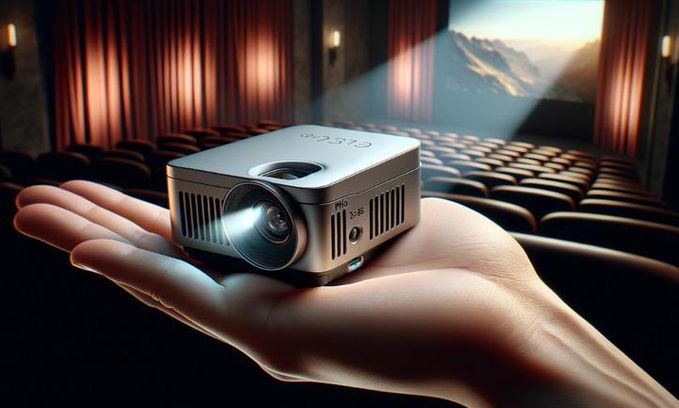Conventionally, all projectors weighing up to 2.3 kg / 5 lbs are classified as portable. Some sellers call them pocket. But the dimensions of almost all modern portable models clearly do not correspond to the dimensions of a regular pocket. In fairness, the market offers several really miniature models that can be carried in a pocket as a portable TV. But their image quality is too low due to limited brightness, low contrast and resolution.
The list of the most popular pocket-sized pico projectors includes Wemax Go, Yaber Pico T1 and Formovie P1:
– Wemax Go (2022) – $ 200, Laser Phosphor, 300 ANSI Lumens, (960 x 640) resolution, 500:1 native contrast, 0.8W speaker, 0.3 kg / 2 cm x 8 cm x 15 cm.
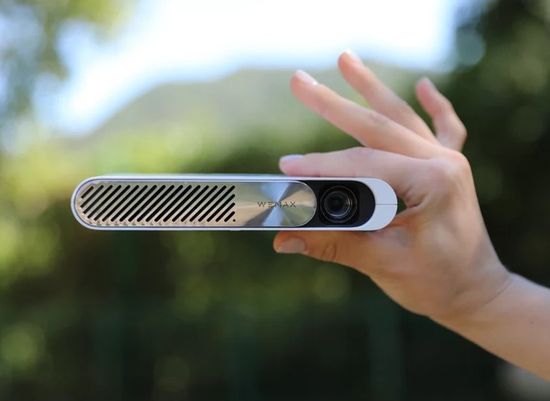
– Yaber Pico T1 (2022) – $ 400, LED, 110 ANSI Lumens, qHD (960 x 540) resolution, 350:1 (full on/off) native contrast, 1.5W speaker, 0.1 kg / 0.3 lbs, 1 cm x 7 cm x 15 cm.
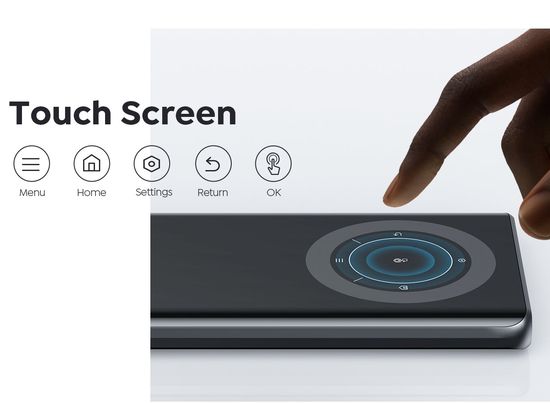
For reference, qHD is a display resolution of 960 × 540 pixels, which is exactly one-quarter of a Full HD (1080p) frame;
– Formovie P1 – $ 400 / £ 210, Laser Phosphor, 250 ANSI Lumens, (960 x 540) resolution, 600:1 native contrast, mono speaker, 0.3 kg, 2 cm x 8 cm x 15 cm.
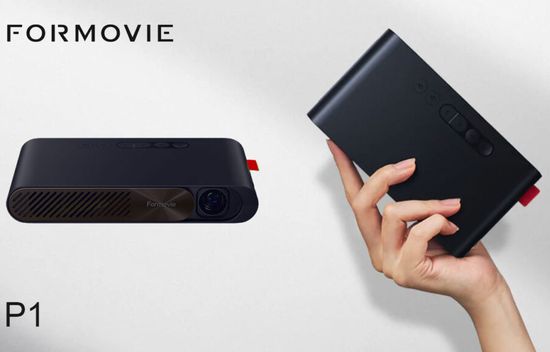
It‘s still available for sale, but has been discontinued since July 2024;
– AKASO WT50 (2018) – $ 240, 50 ANSI Lumens, HD (720 x 480) native resolution, mono speaker, 0.8 kg / 1.7 lbs, 2 cm x 8 cm x 14.5 cm, built-in rechargeable battery.
The list of portable mini projectors with larger sizes and with significantly higher specs is much longer.
Mini LED projectors
Portable models often have a cube or cylinder form factor and fit into a small bag.
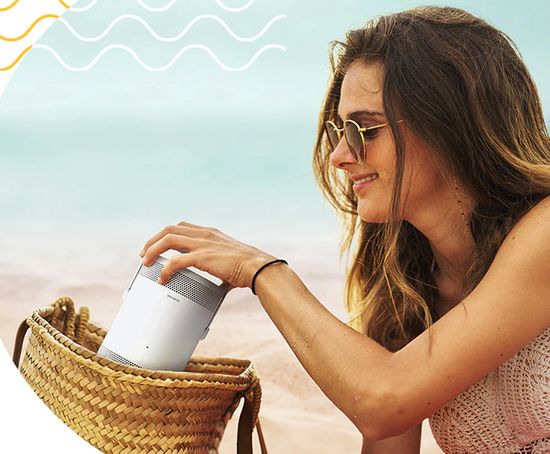
Of course, design, size and weight are important factors when choosing a portable projector, but they are not enough. It requires at least a simplified. As know, the image quality is one of the main criteria for any video equipment. In turn, in the projector it depends on the light source (brightness, color gamma and contrast) and resolution.
Modern mini projectors mainly use DLP display technology, and LEDs or Advanced Laser Phosphor Display (ALPD) – based laser-phosphor light engines. Lamps are not suitable for the mini form factor, because they require a large internal volume to effectively dissipate the heat of a very hot lamp.
LEDs are reliable and inexpensive, but their brightness is limited by low power. But companies are successfully solving this problem. For example, XGIMI Horizon Ultra 4K projector uses a hybrid Dual Light (LED + laser) RGBB with an additional red laser to enhance the brightness and saturation of the red.
The gaming BenQ X3000i uses 4LED light source (RGBB), including 3LED and an additional blue LED, which boosts overall brightness.
Laser light engines подразделяются на ALPD 3.0-based Laser Phosphor and ALPD 4.0-based three-laser models. The triple laser light engine has a color gamut of over 100% in the BT.2020 color space, but it’s more expensive and can produce speckles due to interference. Companies usually use them in full-size models in conjunction with additional schemes to minimize this problem. But some mini projectors also have similar light engines.
ALPD and XPR technologies
Chinese Appotronics’s Advanced Laser Phosphor Display (ALPD) technology uses laser-excited fluorescent materials and mixed multi-color laser lines to form a high-quality image. Over 15 years, the company has already developed 5 generations, introducing last year ALPD 5.0 version in Dangbei X5 Ultra 4K model. It uses three colors of laser light sources and three colors of LED light sources, providing unprecedented color gamut. Projector reaches of 120% (Rec.2020), 165% (DCI-P3) and 210% (Rec.709). In comparison, ALPD 3.0-based Laser Phosphor lidgt source usually covers no more than 100% (Rec. 709) and 80-85% (DCI-P3). The color gamut of most LED models ranges up to 85% (Rec.709) and 70% ( DCI-P3).
In addition to brightness and color gamut, image quality directly depends on resolution. Until recently, companies almost did not offer 4K DLP models. The development of pixel shift-based Xpanded Pixel Resolution (XPR) technology for Digital Micromirror Device (DMD) DLP chipset by the American Texas Instruments (TI) radically changed the situation.
In fact, it divides 8 million pixels of 4K content into two or four parts (2- or 4-phase pixel shift). Then, the 2 million micromirrors of the relatively cheap 1080p chipset sequentially display two or four 1080p images, shifting them half a pixel relative to each other.
Of course, the projector displays only one 1080p image at any time. But due to the high frequency, the vision and brain perceive them as one picture with a higher resolution. The pixel shift is carried out by tilting the lens using 4 XPR module magnets.

Mini projectors
Incomplete list of most popular models includes:
– Dangbei Atom (2024) ~ $ 900, Laser Phosphor light engine, 1,200 ISO Lumens brightness (accordance with ISO 21118 standard), Full HD (1,920 x 1,080) resolution, Google TV with built-in Netflix, Full HD 3D, (5 x 20 x 20 cm) and 1.3 kg / 2.8 lbs, 2 x 5.0W internal speakers, auto focus + keystone + intelligent screen fit + obstacle avoidance.
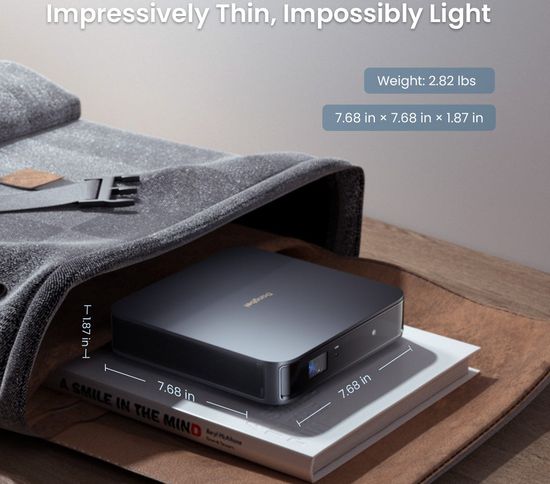
– Anker Capsule 3 (2023, discontinued) ~ $ 800, Laser Phosphor, 300 ANSI Lumens (ANSI IT7.228), Full HD resolution, Android TV 11.0, Soda-Can form factor, (8 x 17 x 8 cm) and 1 kg / 2.1 lbs, 8.0W mono, auto focus.
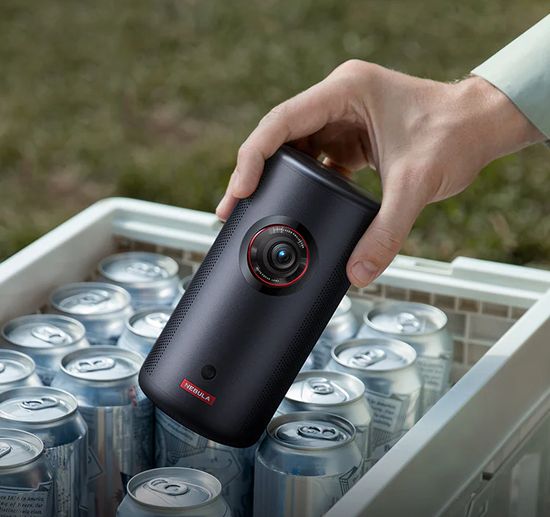
– ASUS ZenBeam L2 (2023) ~ $ 700, LED, 400 ANSI Lumens, Full HD resolution, Google Certified Android 12 TV box with pre-loaded Netflix, (17 x 13 x 13 cm) and 1.6 kg / 3.5 lbs, 10W mono, auto focus + geometric correction.
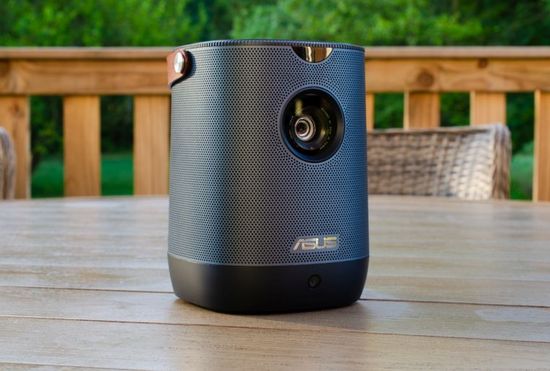
– XGIMI Halo+ (2021) ~ $ 800, LED, 900 ANSI Lumens, Full HD resolution, Android OS, Full HD 3D, (17 x 15 x 11 cm) and 1.6 kg / 3.5 lbs, 2 x 5.0W (Harman/Kardon), auto focus + geometric correction.
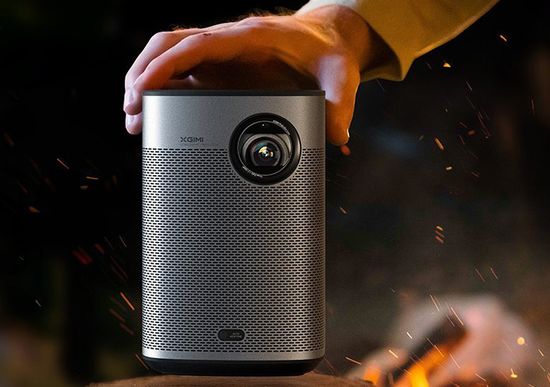
For reference, 1 ANSI Lumen ~ 0.8 ISO Lumens.
Of course, the range of new models is much wider, but projectors weighing more than 2 kg can hardly be positioned as mini.
Their price range from $ 700 to $ 900. All models have Full HD (1,920 x 1,080) resolution, internal speakers, support streaming from Android TV or Google TV, offer auto focus and keystone. Their LED or laser phosphor light sources provide brightness from 300 to 1,000 ANSI Lumens.
Selection criteria
This list includes:
– auto setup features, including auto focus, auto keystone, and screen alignment;
– a built-in smart TV system to provide video content;
– Full HD 1080р (1,920 x 1,080) or 4K Ultra HD (3,840 x 2,160 pixels) resolution (4K content increases power consumption);
– quite high image quality (contrast, color gamut and color saturation);
– brightness or light output.
Typically, the brightness of modern portable projectors ranges from 300 to 500 ANSI Lumens. This is sufficient for dark environments, dimly lit rooms, or backyard use in the evening, but daylight makes it duller and faded.
The brightness from 1,000 ANSI Lumens and above will successfully compensate for even fairly bright ambient lighting. But, of course, it directly affects energy consumption. The required brightness also depends on the screen size.
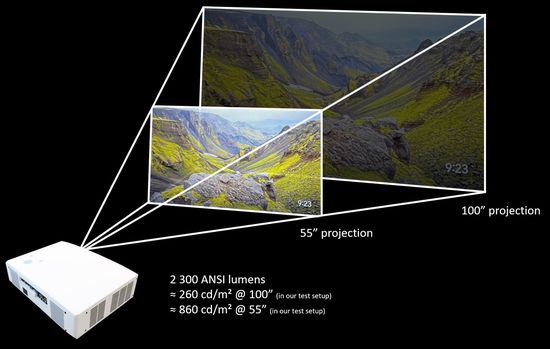
– long enough battery life.
Of course, this factor depends on power consumption, which in turn depends on content, brightness level, etc. The battery capacity depends on its size. But portable projectors have limited size. Therefore, modern models usually have a Type-C port to connect it to an external power bank;
– sufficiently powerful speakers or eARC outpute.
The small volume significantly limits the power and quality of the sound. Typically, their audio system does not have a subwoofer, preventing the projector from creating a full 3D audio scene. But many models have eARC outpute (Enhanced Audio Return Channel) for transmitting the original audio signal to an external audio system in full resolution;
– connectivity.
The standard connectivity options include HDMI and USB-A ports. But many projectors also have a USB-C port for connecting to a smartphone or portable gaming consoles, including Nintendo Switch, Asus Ally, NVIDIA Steam Deck, etc.
Conclusion
Of course, the optimal choice of a projector depends significantly on its use. In particular, the color gamut and contrast are most important for general indoor usage. Some models additionally offer a rotation option, allowing it to project an image directly onto the ceiling.
Enough brightness (500 – 1,000 ANSI lumens), powerful sound and long battery life are important for viewing outdoors, in the yard or while camping.
The gaming performance of the projector directly depends on the input lag. Modern gaming projectors have made huge progress in this aspect. For example, the compact BenQ X300G provides 4.16 ms / 1080p@240Hz, 8ms / 1440p@120Hz and 16ms / 4K@60Hz. In comparison, casual games require only 50ms or even more.
Overall, the market offers a wide range of portable models. The pocket-sized pico projectors actually fit in a jacket pocket and cost between $ 200 and $ 400. Unfortunately, their image quality is not very high due to low brightness (up to 300 ANSI Lm). Mini models weighing from 1 to 1.5 kg require a carrying bag and are more expensive ($ 700 – $ 900). But they provide significantly higher image quality due to higher brightness up to 1,000 ANSI Lm and offer greater functionality. The pocket-sized projectors are ideal for students, mini projectors are quite suitable for newlyweds as a portable TV.
The video demonstrates the new Dangbei Atom laser projector with Google TV.
